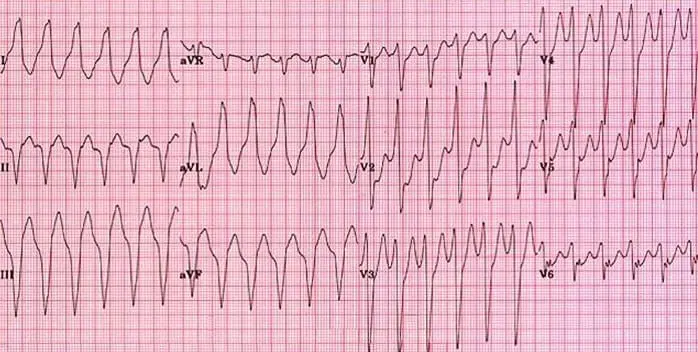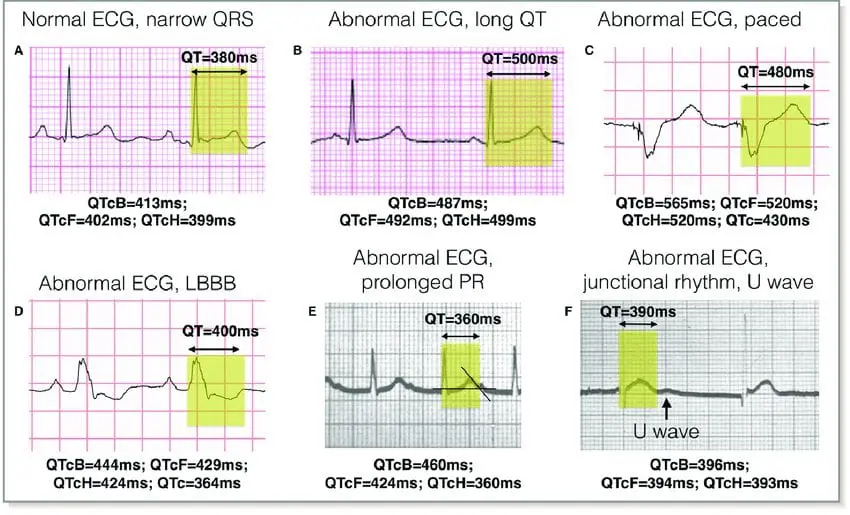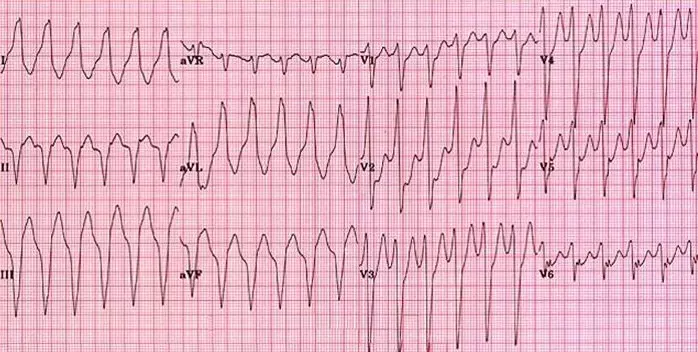I’m very happy that I get to write about the topic of ECGs. As our instructor Ramon always says during ECG Interpretations: “See, how easy it is” it’s definitely easy when you learn all the criteria to qualify abnormalities and typical ECG rhythms. But if you are not familiar with them then that’s a problem. Every ECG seems to you as a clueless art piece. My Cardiologist Technologist class definitely has to be fortunate enough to have Ramon as our ECG instructor. He always finds a different way of analyzing an ECG that makes us students identify it easier and faster. There are rhythms like Ventricular Tachycardia which is a life threatening rhythm at which the ventricles pace at a fast rate that needs a physician’s attention right away. Below you can see an ECG with Ventricular Tachycardia.

Measuring durations and intervals
Reading between the lines on the ECG and measuring durations and intervals has a huge importance as one can detect chamber enlargements and also risk of sudden death known as a prolonged QT Syndrome. So my caliper has become my best friend in measuring duration, segments and intervals. Below you can see on how many different measurements we work with by doing a proper ECG Interpretation.

I’m very impressed with the amount of abnormalities I’m able to recognize on the ECG and therefore rescue a person’s life. To be consistence with our practice our instructor has been giving us continues packages of random ECGs which we need to analyze. Moreover, we’ve also been given case studies with typical scenarios of patient’s symptoms on which we were able to identify abnormalities on the ECG and do a proper diagnosis.
Axis Deflections
Now believe it or not, working with ECGs also involves working with Axis Deflections. Oh my, that really can be tricky sometimes. As one has to be careful with identifying on which axis the ventricular depolarization reflects on. We do need to have accurate analysis on this one because when a patient’s ECG has a deflections towards a Left Axis or right axis it means that there is an involvement of a fascicular block. A fascial is a bundle in which electrical impulses are transmitted for the heart to contract. There is actually more explanation involved in this category since this blog is just an introduction of ECGS, I’m going to keep it nice and short.
A lifesaving career
All what I can say for now is that doing an ECG interpretation definitely requires critical thinking and the knowledge of criteria to identify abnormalities. So far after having done interpretations on about 800 ECGs I’m happy that I can identify abnormalities on an ECG. Even though as our instructor has told us that ECGs can’t fully diagnose a patient , it is still the 1st diagnostic test done on a patient’s admission to have a brief understanding about the patient’s conditions and help preventing any upcoming life threatening diseases.
We really ________read between the lines ________and make sure that abnormal signs are identified and brought up to the physician so that proper treatments can be performed on the patient. Cardiologist Technologist is definitely a lifesaving career that is and always will be appreciated by other health professional, specially the patient.
The journey on ECGs is not over yet and I guess won’t be over until I retire 😉 So I’m glad to say that I have chosen a right profession which saves my life and moreover, that of the patient.
All is well!
Check out a video of our cardio tech students in action.





![An ECG demonstrates the extensive antero-septal-lateral myocardial infarction [heart attack] that Taryn witnessed.](https://stenbergcollege.com/wp-content/smush-webp/2022/12/ecg-1024x530.jpg.webp)





